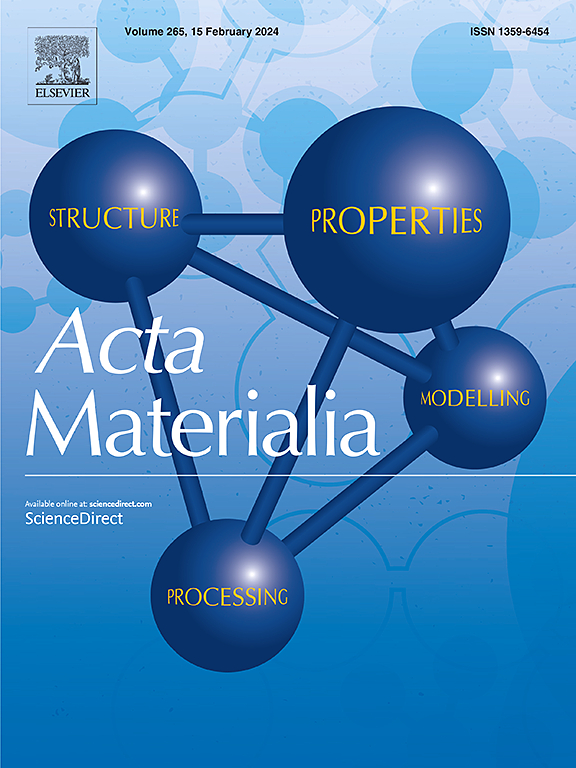An ultra-thin composite magnesium anode with controlled (002) facet orientation by heterogeneous epitaxial electrodeposition for highly stable lean-magnesium metal batteries
IF 8.3
1区 材料科学
Q1 MATERIALS SCIENCE, MULTIDISCIPLINARY
引用次数: 0
Abstract
The composite magnesium anode is essential for constructing sustainable and high-energy-density lean-magnesium metal batteries, as it addresses magnesium overload on anode, low coulombic efficiency and unsatisfied lifespan triggered by inhomogeneous Mg deposition behavior. Herein, a strategy is developed to regulate epitaxial growth orientation of magnesium crystal grain via an artificial interfacial fluorine-doped inorganic carbon (CF) layer on commercial Cu-foil substrate, enabling the fabrication of highly stable ultra-thin composite magnesium anodes with preferred Mg (002) orientation. The CF-Cu exhibits a high lattice match and strong adsorption with the Mg (002) facet, promoting (002)-oriented nucleation and grain-refined growth parallel to substrate plane for only a 13 µm thick magnesium layer, ultimately enhancing Mg plating/stripping reversibility. Additionally, incorporating F-ion facilitates the in-situ formation of magnesiophilic inorganic component MgF2, accelerating Mg2+ transport kinetics for rapid crystal nucleation. The resulting anode achieves a high coulombic efficiency of 99.7% over 1400 cycles at 1 mA cm−2, with a polarization of 0.2 V and a lifetime exceeding 3000 h in symmetric cells. Furthermore, the full cell exhibit improved capacity, superior dynamics and enhanced cycle performance. This work highlights the designed multifunctional ultra-thin composite magnesium anodes based on commercially available substrate for high-stability lean-magnesium metal batteries.


采用非均质外延电沉积技术制备控制(002)面取向的超薄复合镁阳极,用于高稳定性贫镁金属电池
复合镁阳极是构建可持续高能量密度贫镁金属电池所必需的,因为它解决了阳极镁过载、低库仑效率和不均匀镁沉积行为引发的寿命不满意等问题。本文提出了一种通过在商用铜箔衬底上人工界面掺氟无机碳(CF)层来调节镁晶粒外延生长取向的策略,从而制备出具有优先取向Mg(002)的高度稳定的超薄复合镁阳极。CF-Cu与Mg(002)表面表现出高度的晶格匹配和强吸附,促进了(002)取向成核和晶粒细化生长,仅在13 μ m厚的镁层上平行于衬底平面,最终提高了Mg电镀/剥离的可逆性。此外,加入f离子促进了亲镁无机组分MgF2的原位形成,加速了Mg2+的输运动力学,加速了晶体的快速成核。该阳极在1ma cm−2下,在1400次循环中获得了99.7%的高库仑效率,极化为0.2 V,在对称电池中寿命超过3000小时。此外,完整的电池表现出改进的容量,优越的动力学和增强的循环性能。本工作重点介绍了基于市售衬底的多功能超薄复合镁阳极,用于高稳定性贫镁金属电池。
本文章由计算机程序翻译,如有差异,请以英文原文为准。
求助全文
约1分钟内获得全文
求助全文
来源期刊

Acta Materialia
工程技术-材料科学:综合
CiteScore
16.10
自引率
8.50%
发文量
801
审稿时长
53 days
期刊介绍:
Acta Materialia serves as a platform for publishing full-length, original papers and commissioned overviews that contribute to a profound understanding of the correlation between the processing, structure, and properties of inorganic materials. The journal seeks papers with high impact potential or those that significantly propel the field forward. The scope includes the atomic and molecular arrangements, chemical and electronic structures, and microstructure of materials, focusing on their mechanical or functional behavior across all length scales, including nanostructures.
 求助内容:
求助内容: 应助结果提醒方式:
应助结果提醒方式:


